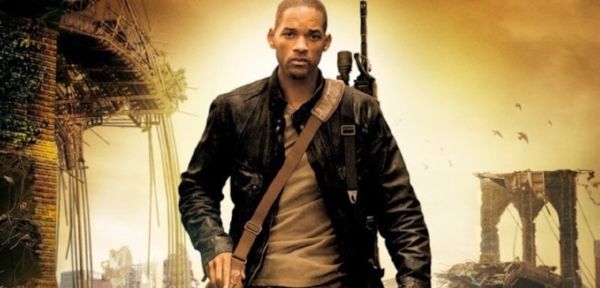The Man Who Would Be Kingpin
Wanted
The New York Sun, June 27, 2008
Whatever else you might want to say about it, Mark Millar's graphic novel "Wanted" was one of the most effective evocations of nerd-boy rage since the days of Bobby Fischer. Obscene, misogynistic, scatological, and saturated with a nasty geek nihilism, it's a clever, unsettling, and unpleasant bloodbath only occasionally softened by signs that it was intended as some sort of parody. Reports that "Wanted" was to be turned into a major Hollywood vehicle made for a bad day. The news that it was going to be filmed by Timur Bekmambetov made a bad day worse.
Mr. Bekmambetov is a Russian director best known in the West for "Night Watch" and "Day Watch," huge hits in his home country that were, if nothing else, reassuring evidence that the era of the Soviet collective-farm epic has, mercifully, drawn to a close. Indeed, the Russian appetite for flashy, empty-headed movies with pretensions of saga status is, these days, just as great as our own. The first installments in a confused and barely comprehensible fantasy trilogy, "Night Watch" and "Day Watch" have been compared by the deluded or the hired with the "Lord of the Rings" films, a comparison not unlike claiming that "Van Helsing" should be ranked with "Dracula." The prospect of Mr. Bekmambetov taking his restless, gimmicky, and derivative camera into the depths of Mr. Millar's perverse multiverse was almost too awful to contemplate.
Remarkably, however, the director and his scriptwriters (previously best known for their contributions to "The Fast and the Furious" canon) have surmounted both their limitations and the business problem presented by Mr. Millar's original material by coming up with a plot that is not only pretty much their own, but, once one has accepted its fundamental absurdity, fairly easy to follow. The starting point in "Wanted" owes much to Mr. Millar and his concept of a geeky loser trapped in Dilbertland who comes to discover that he is the heir to something powerful, dangerous, and strange (wish fulfillment, anybody?).
From there, however, the film mainly goes its own way (apart from the watered-down finale), with only the occasional allusion to the original "Wanted." Mr. Millar's key dystopian premise has been shelved, and with it, his supremely unattractive super-villains (including a Thing-like creature composed of serial-killer fecal matter), the use of random killings and rape as methods of empowerment, and rather too many sequences of peculiarly grotesque violence.
Instead, moviegoers will be treated to a mildly enjoyable piece of hyperkinetic hokum. Innovative it is not. "Wanted" is overreliant on car chases as dully prolonged as a mid-'70s guitar solo and about as original, age-old conspiracies with more than a hint of Dan Brown about them, and slow-motion bullet ballets of a type already clichéd by the end of the first "Matrix" film. If "Wanted" feels by-the-numbers, that's because it is: Even its mayhem comes across as just a touch too planned. Crash the car. Wreck the train. Kill someone.
The movie has its moments, one or two good jokes, and a satisfactory number of exploding heads, but, whatever its director's aspirations, it fails to convey that sense of another world — ours but not quite — that ought to be key to any comic book adaptation. A film of this type should be a magic carpet ride, exhilarating and impossible. "Wanted," by contrast, is as functional as a trip on the crosstown bus, complete with stops, starts, and periods of boredom.
When given the chance, the cast does the best it can. Mr. McAvoy is splendid as Wesley, the bright, put-upon office drone who discovers that he is a member of an ancient caste of assassins. Slight and not particularly tall, Mr. McAvoy is not an obvious action hero, but as Wesley is taught the ways of the Weavers (the ancient caste, not the ancient folk group) in a series of tutorials that appear mainly to involve repeated beatings, target shooting at corpses, and riding the roofs of Chicago's 'L' trains, the actor offers a surprisingly convincing picture of a nerd being transformed into possibly the planet's most lethal killer — no small achievement for a man who played a faun in the first Narnia movie.
Meanwhile, as Weaver chief Sloan, Morgan Freeman takes a break from playing the president and God to remind us that he can portray someone altogether less lofty. Clad in what looks like early Reagan-era Men's Wearhouse, he's bureaucrat, capo, and mentor — a blend of organization man, Don Corleone, and the X-Men's Professor Xavier. He's also an individual with secrets to hide, something that Mr. Freeman manages to convey with little more than a deft glance. Under the circumstances, it's an amazingly subtle performance.
And then there's Angelina Jolie as Fox, the Weaver who is the first to wrench Wesley away from his previously humdrum life before becoming his trainer and, on his first mission, accomplice. Fierce, chiseled, and commanding, Ms. Jolie dominates nearly every scene in which she appears. As is to be expected of the former Mrs. Smith, she makes a very believable assassin. Nevertheless, it's difficult to shake the feeling that her role is as much "Angelina Jolie" as it is Fox, as much a riff on her own public image as an interpretation of the character she is allegedly depicting. Either way, it's a hypnotic performance, if it is a performance: There's an alarmingly feral glint in her eye that must, I imagine, be very, very tricky to fake. There are times when I tremble for Brad Pitt.















